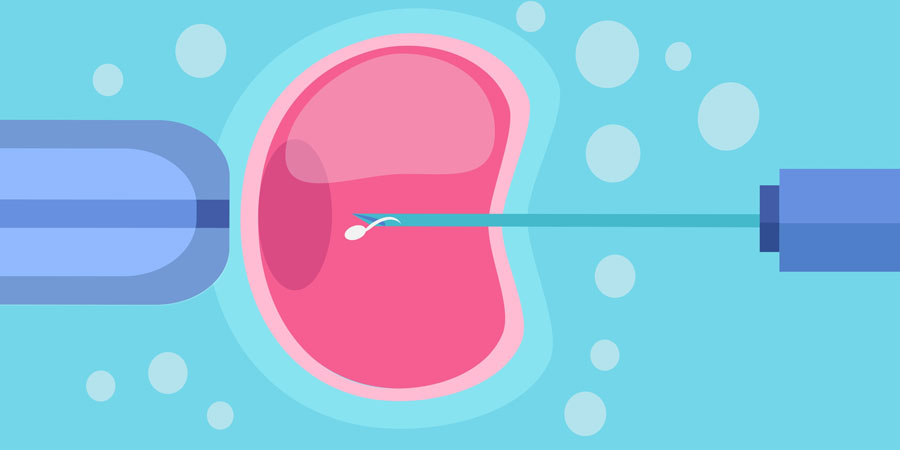
ICSI is also an Assisted Reproductive technique that is used in cases of male infertility along with IVF. Some even consider it to be a specialized IVF. In IVF, the egg and the sperm are fertilized outside the womb and inserted into the uterus. But to improve the chances of fertilization, especially when the sperm count is low, ICSI can be used. The success rates of ICSI are known to be the same as IVF as both are used in tandem.
Who is ICSI suitable for?
ICSI is usually performed in the following cases of male infertility
- Where the Sperm Count is said to be low
- Low Sperm Morphology – i.e, defect in the anatomy of the sperm
- Low Motility – i.e, in cases where the sperm movement is not normal or moves in other ways
- Where anti-sperm antibodies are found to be high in the semen
- Or if the patient has previous undergone Vasectomy and Vasectomy reversal has been unsuccessful
- Infectious diseases or infertility caused by immune factors
- Retrograde ejaculation
How does it work?
ICSI is a procedure that is conducted in laboratories. Here, a single sperm is chosen with the help of a fine glass needle and the same is injected into the cytoplasm of the egg. This increases the chances of fertilization better then IVF, where a number of sperms are required to fertilize the egg. In case of ICSI, the sperm is already inserted into the egg, thus negating the chances of penetration which is achieved by the technique.
Before this technique is carried out, stimulation of ovaries to ensure maturation of the eggs is also important. Here a large number of oocytes are produced rather than single egg with the help of medications, which is similar to IVF.
Once the eggs are matured, it has to be retrieved for fertilization with the sperm outside the womb. This procedure is called Follicular Puncture and is done in the laboratory where the matured follicles are collected.
With the matured follicles and best quality sperms selected, ICSI is carried out. The embryos are allowed to be fertilized and cultured in the lab for 3 to 5 days. Once the eggs are fertilized and the embryo is cultured, it is then transferred back into the uterus with the help of a cannula for the embryo to implant itself against the uterus lining for further development. The embryos that are left are vitrified to be used in later cycles avoiding ovarian stimulation
What are the benefits of ICSI?
- High Pregnancy Rate
Offers one of the best solutions and successful pregnancy rates even with severe male fertility issues - Affordable
ICSI is as affordable as the IVF and is one of the cheaper method of treatment - Safe
With advent of technology, ICSI is a safe procedure with very rare cases of any birth defects or associated risks - State of the art IVF lab
Wellspring Fertility offers the State-of-the-Art ICSI lab to ensure safe and successful procedures for our clients
